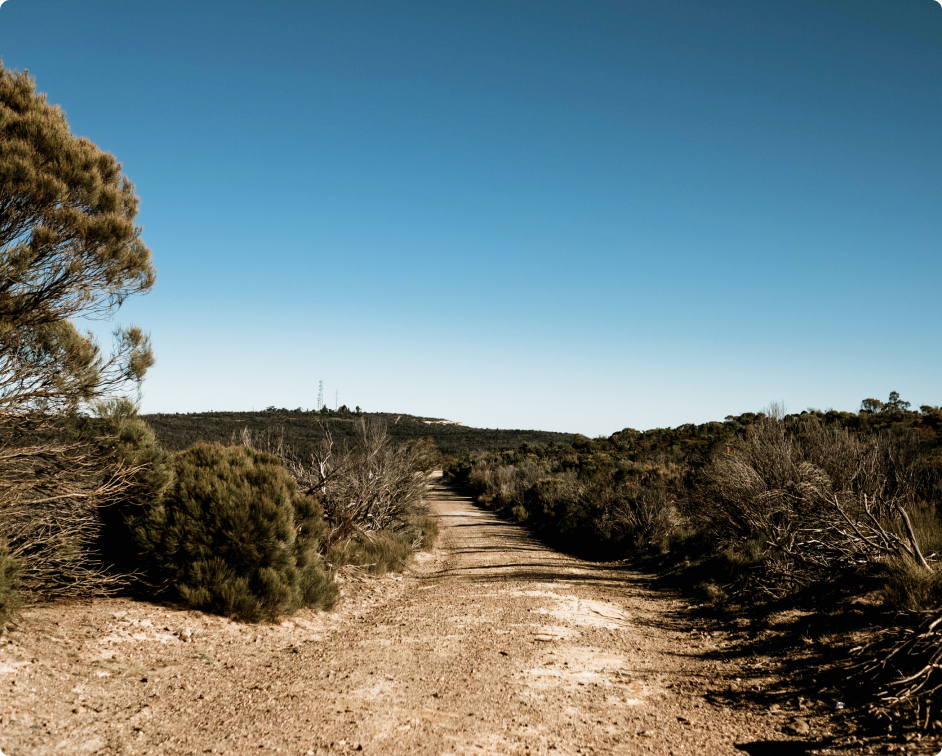UNESCO, ICIP and Aboriginal and Torres Strait Islander cultural heritage
This information sheet discusses the United Nations Educational, Scientific and Cultural Organization (UNESCO), its function in protecting cultural heritage and how it relates to Aboriginal and Torres Strait Islander cultural heritage.
UNESCO
The United Nations Educational, Scientific and Cultural Organisation (UNESCO) is a specialised international agency dedicated to strengthening our shared humanity through the promotion of education, science, culture and communication.
Its purpose is to contribute to peace and security by promoting collaboration among nations’ education, science and culture in order to further universal respect for justice, for the rule of law and for the human rights and fundamental freedoms which are affirmed for the peoples of the world, without distinction of race, sex, language or religion, by the Charter of the United Nations.[1]
UNESCO aims to achieve this by setting standards, producing tools and develop knowledge to create solutions to current challenges. This includes protecting biodiversity, responding to artificial intelligence, advancing quality of education, safeguarding heritage and ensuring access to reliable information. UNESCO delivers this to its 194 member states.[2]
UNESCO was formed in 1946 and emerged from the devastation of two world wars and the need for a new approach to international world peace. The conception of UNESCO was already at the forefront with the establishment of the League of Nations in 1942. During its early years, UNESCO focused on rebuilding educational, scientific and cultural institutions destroyed during WWII.
Throughout the years UNESCO has achieved significant success, some being the Universal Copyright Convention (1952), Convention on Protecting World Heritage (1972), and the Convention to Safeguard Intangible Cultural Heritage (2003).
Art as Cultural Heritage
In Australia there are federal, state and territory legal frameworks for protecting cultural heritage. There is also specific legislation that concerns Aboriginal and Torres Strait Islander cultural heritage. Cultural heritage laws in Australia only protects tangible cultural heritage not intangible.
Is all art cultural heritage?
Cultural heritage will often include artworks. For example, in the Protection of Moveable Cultural Heritage Act 1986 (Cth) objects of importance to Australia includes fine art, decorative art, ethnographic art and more broader objects such as books, films and photographs.[3]
However, it is unlikely that all art would be regarded formally as cultural heritage unless it can fall under the existing legal framework.
World Heritage List
In 1972 UNESCO adopted a Convention on the Protection of the World Cultural and Natural Heritage. Its aim is to encourage the identification, protection and preservation of cultural and natural heritage around the world that could be considered as outstanding value to humanity.
Cultural heritage refers to monuments, groups of buildings and sites with historical, aesthetic, archaeological, scientific, ethnological or anthropological value.[4] It also includes natural heritage which consists of outstanding physical, biological and geological formations, habitats of threatened species of animals and plants and areas with scientific, conservation or aesthetic value.[5]
To be included in the World Heritage List, all sites must be of outstanding universal value and meet at least one of ten selection criteria:[6]
- to represent a masterpiece of human creative genius;
- to exhibit an important interchange of human values, over a span of time or within a cultural area of the world, on developments in architecture or technology, monumental arts, town-planning or landscape design;
- to bear a unique or at least exceptional testimony to a cultural tradition or to a civilization which is living or which has disappeared;
- to be an outstanding example of a type of building, architectural or technological ensemble or landscape which illustrates (a) significant stage(s) in human history;
- to be an outstanding example of a traditional human settlement, land-use, or sea-use which is representative of a culture (or cultures), or human interaction with the environment especially when it has become vulnerable under the impact of irreversible change;
- to be directly or tangibly associated with events or living traditions, with ideas, or with beliefs, with artistic and literary works of outstanding universal significance. (The Committee considers that this criterion should preferably be used in conjunction with other criteria);
- to contain superlative natural phenomena or areas of exceptional natural beauty and aesthetic importance;
- to be outstanding examples representing major stages of earth’s history, including the record of life, significant on-going geological processes in the development of landforms, or significant geomorphic or physiographic features;
- to be outstanding examples representing significant on-going ecological and biological processes in the evolution and development of terrestrial, fresh water, coastal and marine ecosystems and communities of plants and animals;
- to contain the most important and significant natural habitats for in-situ conservation of biological diversity, including those containing threatened species of outstanding universal value from the point of view of science or conservation.
UNESCO’s World Heritage mission is to:[7]
- encourage countries to sign the World Heritage Convention and to ensure the protection of their natural and cultural heritage;
- encourage States Parties to the Convention to nominate sites within their national territory for inclusion on the World Heritage List;
- encourage States Parties to establish management plans and set up reporting systems on the state of conservation of their World Heritage sites;
- assist States Parties in safeguarding World Heritage sites by providing technical assistance and professional training;
- provide emergency assistance for World Heritage sites in immediate danger;
- support States Parties’ public awareness-building activities for World Heritage conservation;
- encourage participation of the local population in the preservation of their cultural and natural heritage;
- encourage international cooperation in the conservation of our world’s cultural and natural heritage.
The World Heritage List includes 1,224 properties forming part of the cultural and natural heritage which the World Heritage Committee considers as having outstanding universal value.
Australia currently has 21 cultural and natural heritage sites on the World Heritage List. Some of the sites include the Great Barrier Reef, Sydney Opera House, Ningaloo Coast, Uluru-Kata Tjuta National Park and K’gari (Fraser Island). Australia’s most recent addition to the World Heritage List is Murujuga Cultural Landscape (in July of 2025).
Murujuga is a landscape of rock art in the Pilbara region of Western Australia which encompasses the Burrup Peninsula, this includes the Dampier Archipelago’s 42 islands and nearby marine areas. The rock art and petroglyphs depict figures of animals, plants and human figures, estimated to be more than 50,000 years old. The land holds profound cultural and spiritual significance. The artwork is a testament to the on-going connection and care for Country by the Ngarda-Ngarli people as Traditional Owners.[8]
UNESCO and Indigenous Cultural and Intellectual Property
How do UNESCO and Indigenous Cultural and Intellectual Property (ICIP) intersect?
ICIP refers to all aspects of Aboriginal and Torres Strait Islander people’s traditional knowledge and cultural expressions. This broad definition therefore encompasses cultural heritage such as sites, cultural objects or artifacts, ceremonies, language and much more. Importantly, ICIP incorporates both the tangible and intangible (such as oral traditions, knowledge or cultural practice). ICIP is not currently protected under Australian law as standalone legislation but can be applied under other legal frameworks such as copyright.
UNESCO’s 2003 Convention for the Safeguarding of the Intangible Cultural Heritage aims to safeguard intangible cultural heritage, ensure respect, raise awareness and provide international cooperation and assistance.[9] Australia is currently not party to the Convention. The Convention also provides guidelines for protection as well as funds for safeguarding intangible cultural heritage.
Both UNESCO and ICIP promote the protection of Indigenous intangible cultural heritage in a holistic way, both can be useful mechanisms in cultural heritage protection.
Similarly, to UNESCO’s Convention the World Intellectual Property Organisation (WIPO) also aims to protect intellectual property through traditional cultural expression. Although they are both governing institutions, they are independent of each other. However, both institutions have worked cooperatively towards broader goals of safeguarding culture and heritage. Australia joined WIPO in 1972.
For further information on ICIP please visit our ICIP info sheet.
Recent Acts of Destruction – Juukan Gorge
Cultural heritage protection is often an important issue in Australia, especially within the context of Aboriginal and Torres Strait Islander culture. In 2020, cultural heritage protection was at the forefront of Australian issues with the destruction of Juukan Gorge, a rock shelter containing evidence of human life dating back at least 46,000 years ago. The Juukan Gorge sacred site is in the Pilbara region of Western Australia.
In 2020, mining company Rio Tinto blasted and destroyed the sacred site. The destruction resulted in national and global outcry. Under s 18 of the Aboriginal Heritage Act 1972 (WA) Ministerial consent can be given for the interference to an Aboriginal site.[10] This is the section that Rio Tinto relied upon to legally destroy the site. However, although the destruction was undertaken in a legal manner it raised questions around ethical and moral obligations. Since the destruction of the sacred Juukan Gorge site, Rio Tinto has apologised. A national inquiry was undertaken to prevent such an act of devastation ever happening again. Although there were attempts to amend the 1972 Act in 2022 the Aboriginal Heritage Act (2022) was repealed.
It is expected that the Aboriginal Heritage Act 1972 (WA) is to be redrafted and amended to prevent a repeat of incidents like the destruction of Juukan Gorge.
[1] United Nations Educational, Scientific and Cultural Organization, Constitution of the United Nations Educational, Scientific and Cultural Organisation, opened for signature 16 November 1945, 4 UNTS 275 (entered into force 4 November 1946) art 1.
[2] United Nations Educational, Scientific and Cultural Organisation, Who we are.
[3] Protection of Movable Cultural Heritage Act 1986 (Cth) s 7.
[4] United Nations Educational, Scientific and Cultural Organisation, World Heritage Information Kit (Info Kit, June 2008).
[5] Ibid.
[6] United Nations Educational, Scientific and Cultural Organisation, The Criteria for Selection (Web Page) .
[7] United Nations Educational, Scientific and Cultural Organisation, World Heritage Information Kit (Info Kit, June 2008)
[8] United Nations Educational, Scientific and Cultural Organisation, Murujuga Cultural Landscape (World Heritage List, 2019)
[9] United Nations Educational, Scientific and Cultural Organisation, Convention (Web Page) .
[10] Aboriginal Heritage Act 1972 (WA) s 18.
Disclaimer
The information in this information sheet is general. It does not constitute, and should be not relied on as, legal advice. The Arts Law Centre of Australia (Arts Law) recommends seeking advice from a qualified lawyer on the legal issues affecting you before acting on any legal matter.
While Arts Law tries to ensure that the content of this information sheet is accurate, adequate or complete, it does not represent or warrant its accuracy, adequacy or completeness. Arts Law is not responsible for any loss suffered as a result of or in relation to the use of this information sheet. To the extent permitted by law, Arts Law excludes any liability, including any liability for negligence, for any loss, including indirect or consequential damages arising from or in relation to the use of this information sheet.
© Arts Law Centre of Australia
You may photocopy this information sheet for a non-profit purpose, provided you copy all of it, and you do not alter it in any way. Check you have the most recent version by contacting us on (02) 9356 2566 or tollfree outside Sydney on 1800 221 457.
The Arts Law Centre of Australia has been assisted by the Commonwealth Government through the Australia Council, its arts funding and advisory body.



